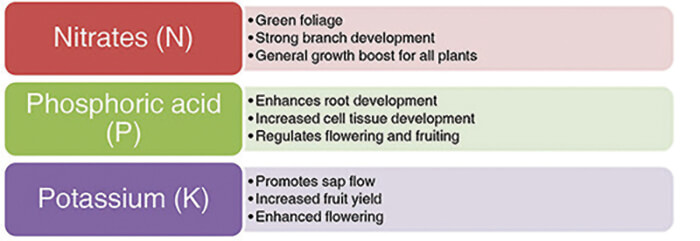Food Scarcity
Spring planting! Ooops! Big problem, folks. There is a commercial fertilizer shortage in the world.
According to Bloomberg, ŌĆ£For the first time ever, farmers the world overŌĆöall at the same timeŌĆöare testing the limits of how much less chemical fertilizer they can apply without devastating their yields come harvest time. Early predictions are bleak.ŌĆØ So bleak, in fact, that the government is trying to organize subsidies upward of half a billion dollars to American farmers for increased wheat, corn and soybean production.
According to Yolobuzz.com, we are currently witnessing the beginning of a global food crisis, driven by the effects of a world-wide pandemic, the rise in fuel prices, and PutinŌĆÖs war. ŌĆ£There were already clear logistical issues with moving grain and food around the globe, which will now be considerably worse as a result of the war.
ŌĆ£A more subtle relationship sits with the link to the nutrients needed to drive high crop yields and quality worldwide.ŌĆØ
What Plants Need for High-Yield-High-Quality Crops
Plants need water, sunlight, and healthy soil. FertilizerŌĆÖs job is to make the soil healthy and nourishing. Nitrogen, phosphorous, and potassium are the three most important nutrients needed to produce high-yield and high-quality crops.
Guess who the biggest producers of these chemicals are? Russia, Ukraine, Belarus, and China. ŌĆ£RussiaŌĆÖs invasion of UkraineŌĆ”effectively cut off nearly a fifth of the worldŌĆÖs nutrient exports,ŌĆØ Bloomberg reports. Between sanctions on Russia and purposeful withholding by China, crop production around the globe is set for a serious decline.
Alternative fertilizer products do exist but will not solve the coming global food crisis. Manure from cows, goats, sheep, or chickens is good fertilizer as far as nitrogen is concerned, but it has very little phosphorus or potassium. Matt Gibson and Erin Russell, writing for gardeningchannel.com, say that most modern farmers find a combination of fertilizers and manure work best. From fertilizers, crops receive balanced nutrients they can utilize immediately in appropriate amounts and proportions without introducing plant or animal disease-causing organisms. Manure improves soil structure and water retention, encourages micro-organisms that break down the soil and converts nutrients into usable forms. But hands down, for the kind of high-yield, high-quality crops that can feed and nourish the world, you need the fertilizers.
Recently, an interesting result out of Sri Lanka illuminated a deep, economic humanitarian crisis that resulted from a government-imposed ban on the importation of fertilizers. Ted Nordhaus and Saloni Shah of the Breakthrough Institute report, ŌĆ£The result was brutal and swift. Against claims that organic methods can produce comparable yields to conventional farming, domestic rice production fell 20 percent in just the first six months. Sri Lanka, historically self-sufficient in rice production, has been forced to import $450 million worth of rice even as domestic prices for this staple of the national diet surged by around 50 percent. The ban also devastated the nationŌĆÖs tea crop, its primary export and source of foreign exchange.ŌĆØ
Prior to the pandemicŌĆÖs outbreak, the country had proudly achieved upper-middle-income status. Today, half a million people have sunk back into poverty, according to Glenn Reynolds of the NY Post. Fertilizers are back in Sri Lanka.
Food Scarcity Ahead
Soaring prices of fertilizers have farmers trying to make do with less. The result will be smaller, less quality, less nutritious crops. In Costa Rica, a coffee cooperative representing 1,200 small producers sees output falling as much as 15% next year if the farmers miss even one-third of the normal application. In West Africa, falling fertilizer use will shrink this yearŌĆÖs rice and corn harvest by a third, according to the International Fertilizer Development Center, a food security non-profit group. Brazil, the worldŌĆÖs largest producer of soybeans, is looking at a 14% loss of crops. In rural Kenya. Farmer Mary Kamau said she, too, has slashed purchases of commercial fertilizer and is using manure to nourish the coffee and avocados she grows on 12 acres in MurangŌĆÖa County. She worries about the consequences for her family. In the United States, fifth-generation New Mexico farmer Mike Berry recently paid $680 a ton for liquid nitrogen to fertilize his corn crop, an ŌĆ£exorbitantŌĆØ price he said was 232% above last yearŌĆÖs price. Hardest hit in food scarcity is and will continue to be the Middle East and Africa.
The world is eating food produced last year, but make no mistake, global food scarcity is here. Affordable, available food is on a rough trajectory. Developed nations will see soaring prices. Developing nations will suffer starvation. This is the ugly underbelly of PutinŌĆÖs war.
What to Do?
Awareness is the first step. New farming technologies help soil analysis with great accuracy. Alternative fertilizers may be used, like human sludge (human waste) and biosolids, but they have their own environmental and health concerns, believe me. Farmers may choose to produce lower fertilizer crops, like switching out beans for corn. Best of allŌĆ”get rid of Putin.
Visit:thecanyonchronicle.com/ archives to review LaBrotŌĆÖs articles on vertical farming and hydroponics.
As for yours truly, we have a never-ending supply of horse manure, a few bags of fertilizer, a home garden, and a funky little orchard. Survival Topanga-style.
Vamos a ver!









